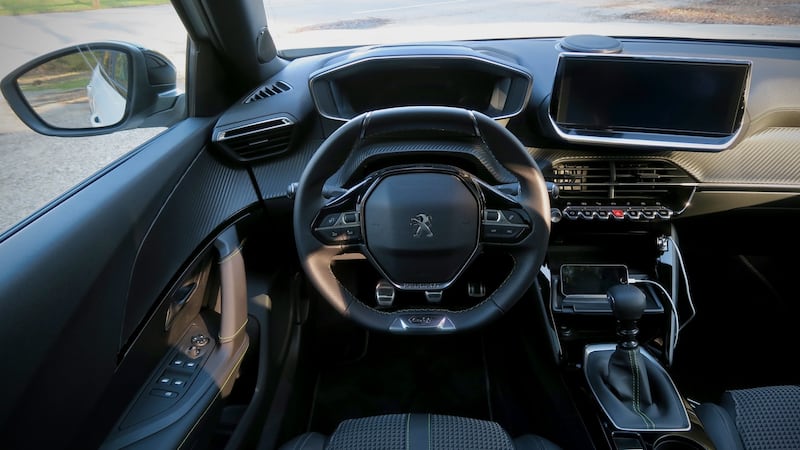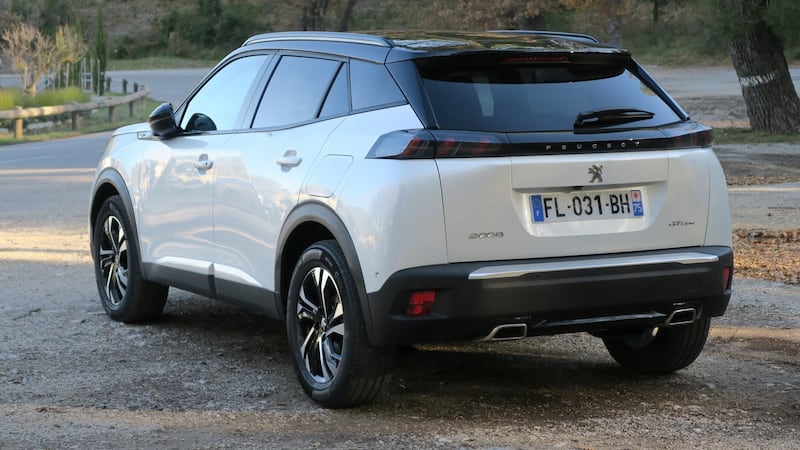For a brand that was rather late – and reluctant – to the SUV craze, Peugeot has not only matched its Asian rivals, but in some ways outdone them. The 3008 and 5008 are both impressive cars and favourites among reviewers at The Irish Times. Indeed the larger seven-seat 5008 was our top car for 2018.
Now the smallest in the pack, the 2008 has got a makeover that brings its looks into line with its larger siblings. And it’s a job well done.
The original generation front-wheel drive 2008 was not pretty. It had an overly tall front end, low set flanks and estate-like rear tailgate. It looked like an all road version of a 208 estate but it was functional with a refreshingly low loading cargo area.
The new 2008 is a much prettier car with a far more cohesive exterior design. Inside the cabin features the latest generation 3D i-Cockpit and is radically overhauled. The 2008 gets the small steering wheel – loved or loathed by motorists – and high set main dials that help keep your eyes on the road ahead. A 10-inch centre touchscreen and 10-speaker Focal sound system are available depending on your choice of equipment grade. Phone connectivity is good with MirrorScreen/MirrorLink, Apple CarPlay and Android Auto.

There is a new phone box cubby for wireless charging and a neat little phone stand. The boot features a split floor and has a capacity of 434 litres expandable to 1,467 litres.
Conventional petrol and diesel engines will dominate sales, but the all-electric e-2008 will bring a lot of new customers to the brand. At present 78 per cent of 2008s are petrol powered with the remaining fuelled by diesel. At their car’s launch we tested a number of petrol and diesels models and the new EV in pre-production form.
The 1.2 litre three-cylinder Puretech petrol engine comes in a range of power outputs: a six-speed manual 100hp/205Nm, rising to a 130hp/230Nm (man/auto) with a 155hp/240Nm EAT8 automatic the most powerful.
We found the range-topping 155hp automatic (EAT8) to be a very brisk version. The 0-100km/h time is 8.2 seconds and its top speed is 208km/h. Riding on big 18-inch alloys, the wheel size on our GT Line model exposed some of the suspension’s shortcomings on anything but smooth roads.
The engine’s nature is like most three-cylinder motors: eager and fun. The only downside to the three pot was that it can be a little noisy especially next to the diesels we tested. The more humble 130hp manual Puretech version was almost as much fun and the higher output was not missed.
While diesel is a dirty word these days, in the 2008, diesel power still has lots of appeal. The four cylinder units have a 1.5-litre engine with two outputs. The entry point, a six-speed manual with 100hp, is a real surprise. It is refined and quiet with plenty of zip for the daily commute. There is only a circa 20kg weight penalty next to the petrol and you really won’t notice it.

The range topper 130hp automatic EAT8 is a gem. It delivers seamless power and our GT model had the best ride comfort of all the versions we tested. The GT felt firm and even sporty. Only the occasional speed bump revealed a little harshness and lack of sophistication. Three drive modes; eco, normal and sport deliver the usual effect on steering and throttle response. Overall, the car feels fluid and corners well.
The e-2008 will go into production a few months after regular production starts, but a test drive in a pre-production version confirmed its has huge potential. It is similar on the road to the diesel and despite a circa 340kg weight gain due to the battery pack the car drives really well. The strong pulling power from any press on the pedal is impressive and the car feels lively and brisk. It can handle too, and proved enjoyable especially when exiting corners.
The front-wheel drive e-2008 features the same 50kWh water-cooled battery pack as used in the e-208 to power its 136hp electric motor. The latest WLTP figures state a 310km summertime range is possible, slightly less than the lighter e-208 hatchback. A domestic three-pin plug takes 16 hours to deliver a full charge. A high output domestic EV wall box (7.4kW) will do the job in eight hours. A public 11kW slow charger will take five hours 15 minutes. Thirty minutes at a 100kW fast charger via its CCS “combo” plug delivers an 80 per cent charge.
Peugeot Ireland expects its e-2008 to account for circa 10 per cent of sales and this figure could grow to 12-15 per cent and is supply dependent. The EV goes into production in March for April deliveries.
In a busy sector dominated by the impressive Hyundai Kona and the well-priced Dacia Duster, the 2008 has a fight on its hands, but first impressions suggest it is well up for it and could cause a big stir in the little crossover segment when it lands here next year.











